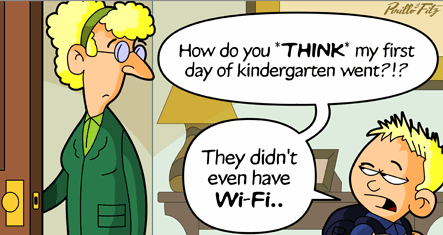We have read the article “Digital Natives, Digital Immigrants” written by Prensky. It is interesting to see the different points of view that this author presents here. One of the ideas we agree with is the fact that, according to the author, “Digital Immigrants don’t believe their students can learn successfully while watching TV or listening to music, because they (the Immigrants) can’t.” Actually, Digital Immigrants see learning or studying as a separate thing from relaxing. They watch TV, a movie, listen to music, etc. when they have finished their work. For instance, some of them think young people do not read because they are not seen with a book, when actually digital natives are constantly reading. They can read in the social networks like Facebook, Twitter, Tumblr, or e-books.
On the other hand we do not think it is impossible that the Digital Natives will go backwards to learn the old ways We are aware of the fact that bringing something odd to Digital Natives can be a risk, but it could be a good opportunity for them to leave technology aside for a while. We should try to take the risk and see what happens. For example, we could ask them to design a poster rather than a Power Point presentation. If the activity or task succeeds, they will be working in a way that they may not be accustomed to and it may call their interest. If it doesn’t work, well, at least we have tried!
All in all, the best we can do is to strike a balance. We have to bear in mind that we will not always find the facilities needed to use technology in all the classrooms/lessons and that is why it is important not only that we adapt ourselves to the way of learning of the Digital Natives, but also that they respect and try to deal with other kind of activities presented to them.
 |
| Retrieved from http://larrycuban.files.wordpress.com/2014/05/kind-wifi.gif |
___________________________
Sources:
- Prensky, M (2001). Digital Natives, Digital Immigrants. On the Horizon
- Prensky, M (2001). Digital Natives, Digital Immigrants. On the Horizon
A very interesting post girls! We agree with the fact that we shouldn't let aside some "old" tools that have been proved to be very efficient in the past. Instead, as you said, we should try to strike a balance between the new effective tools and the "old" still-effective tools.
ResponderEliminar(Aldana and María Eugenia from
https://21stcenturymaterialdesigning.blogspot.com.ar/)